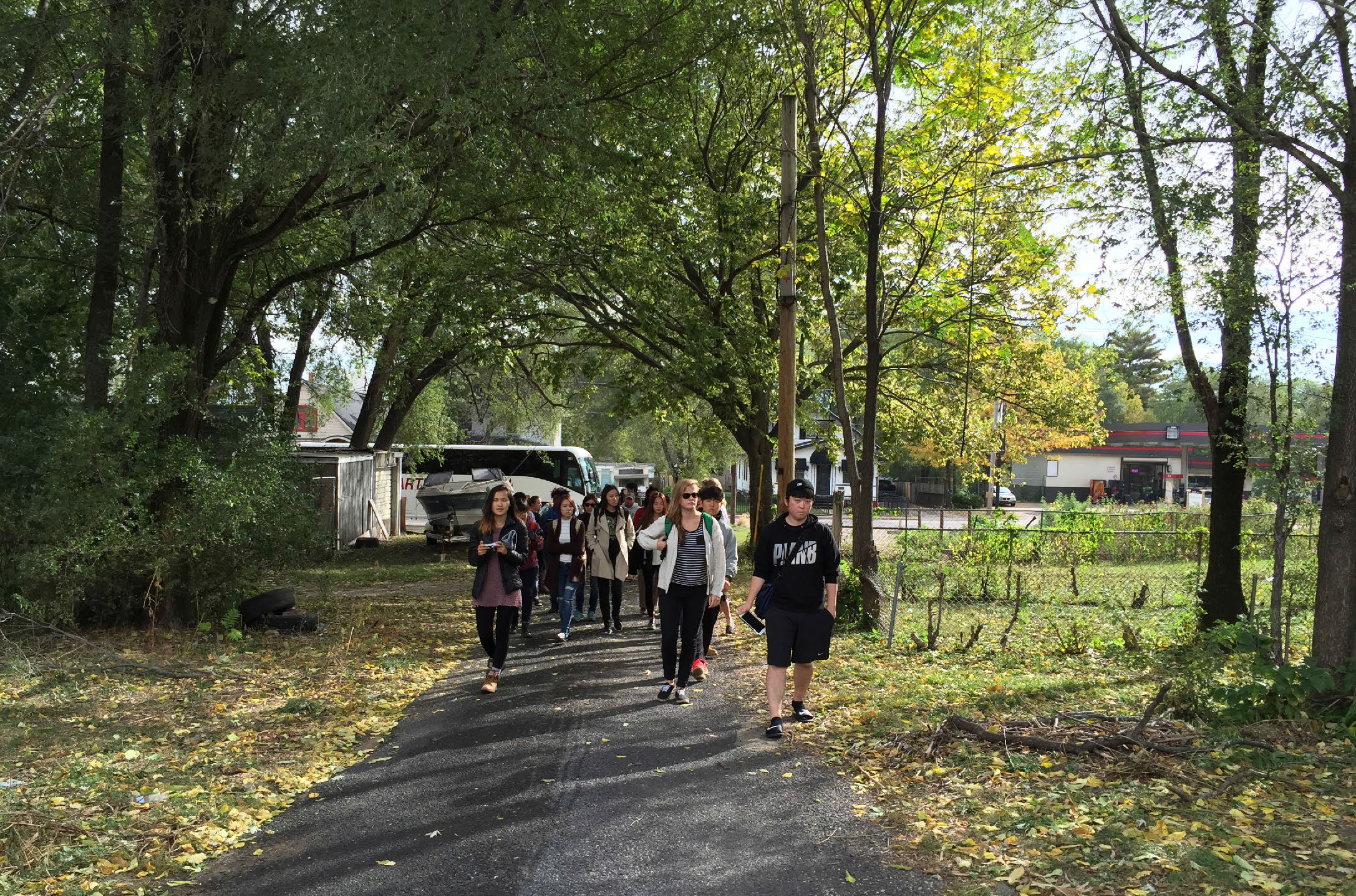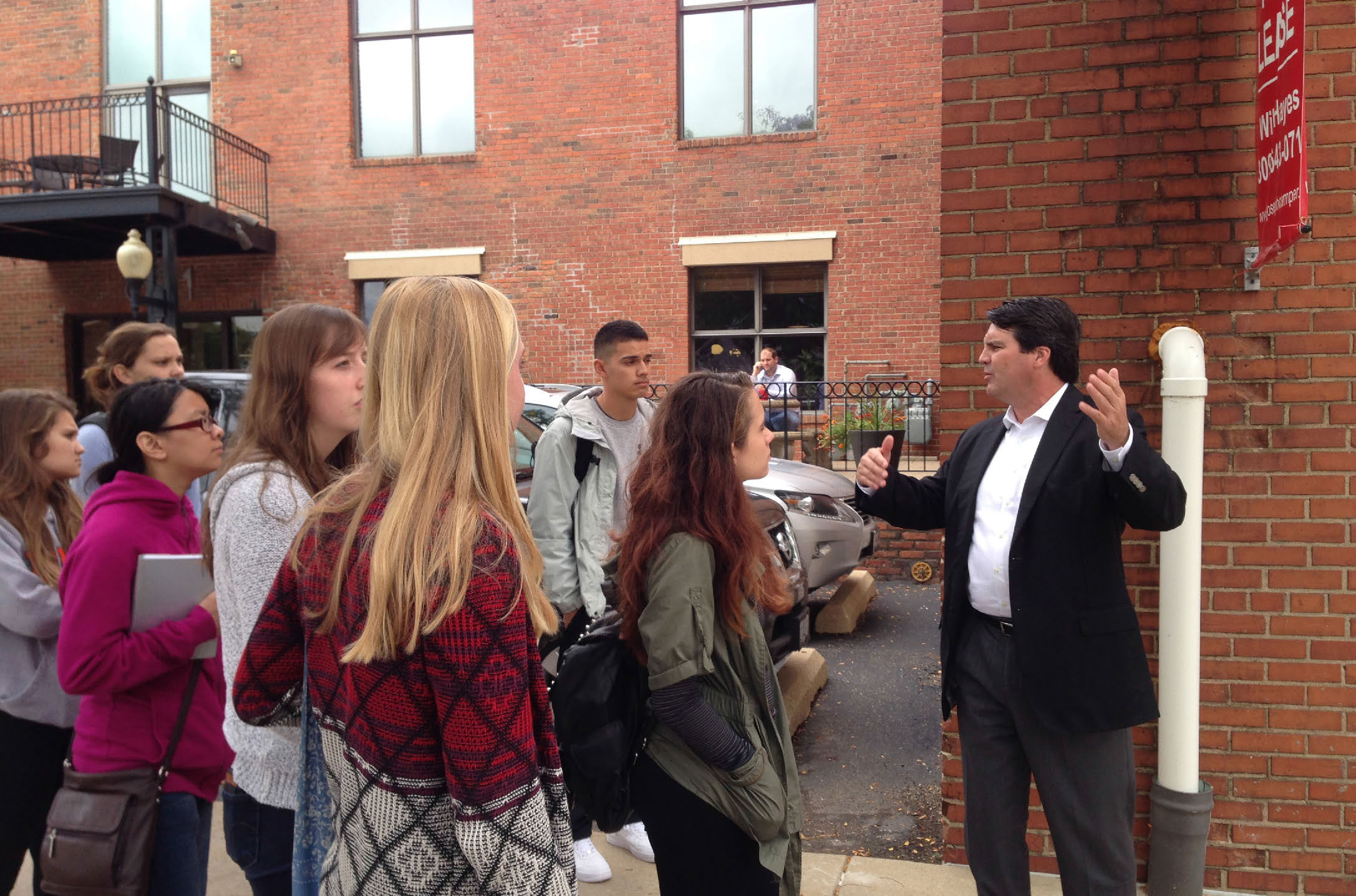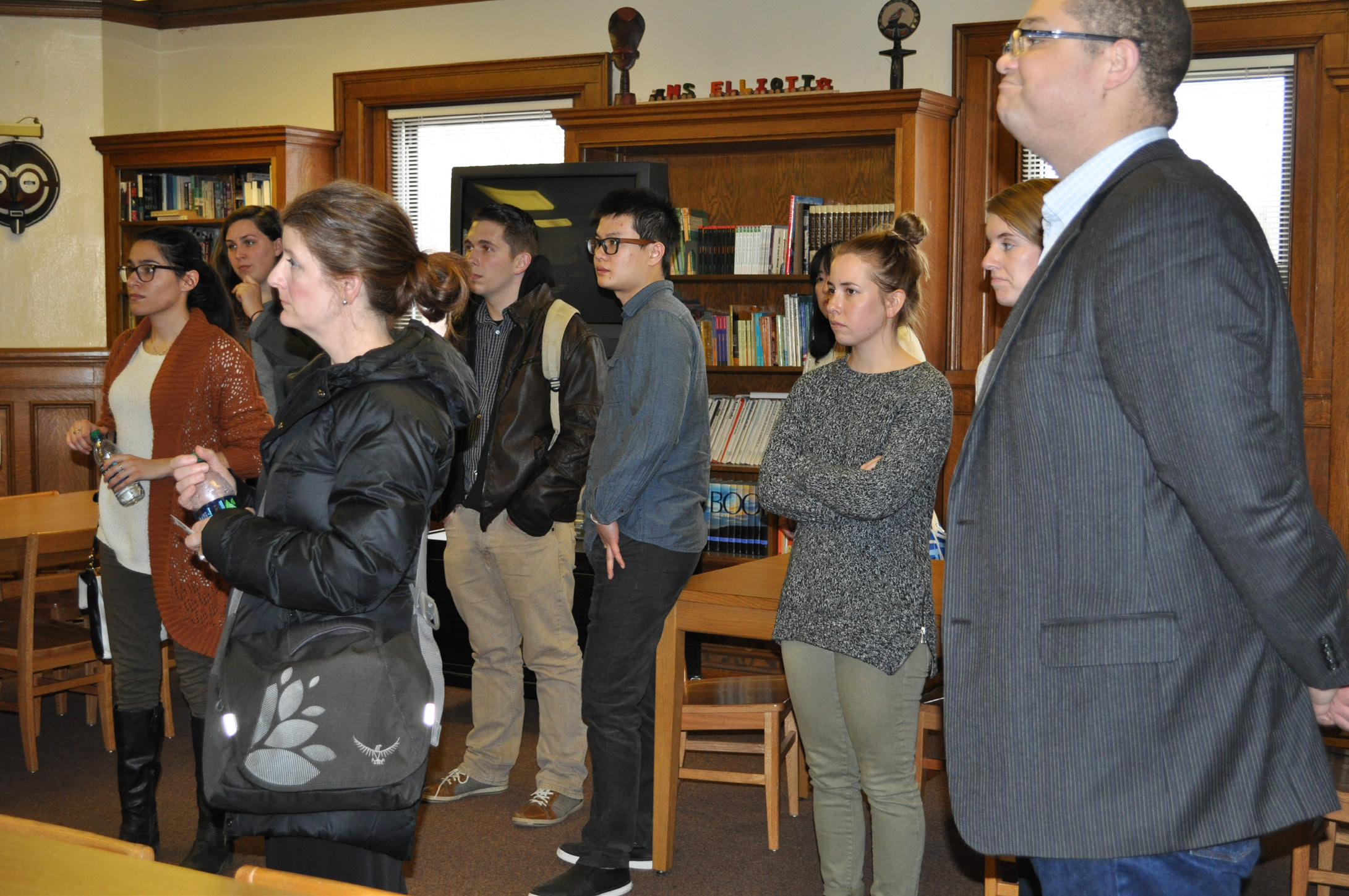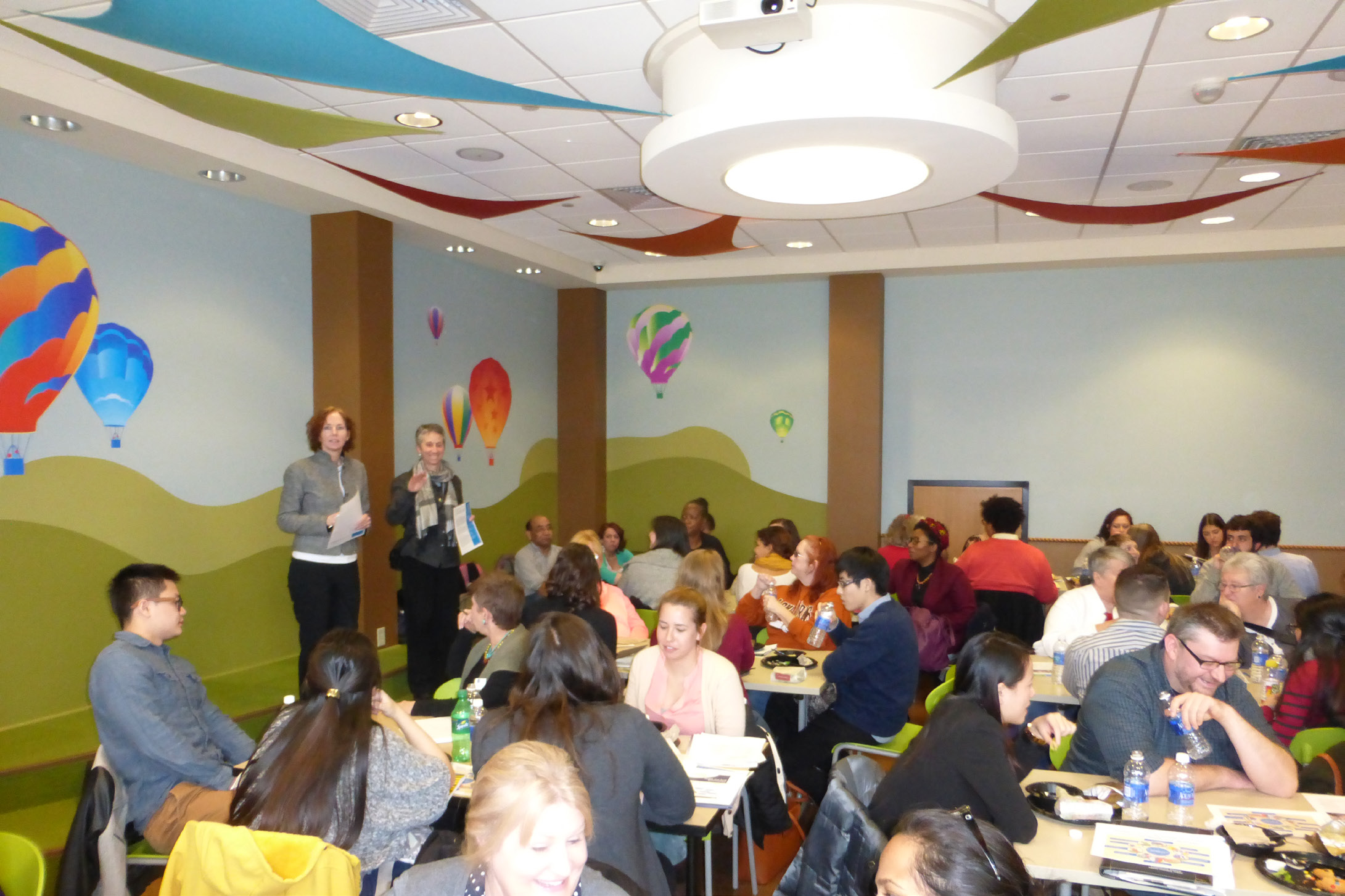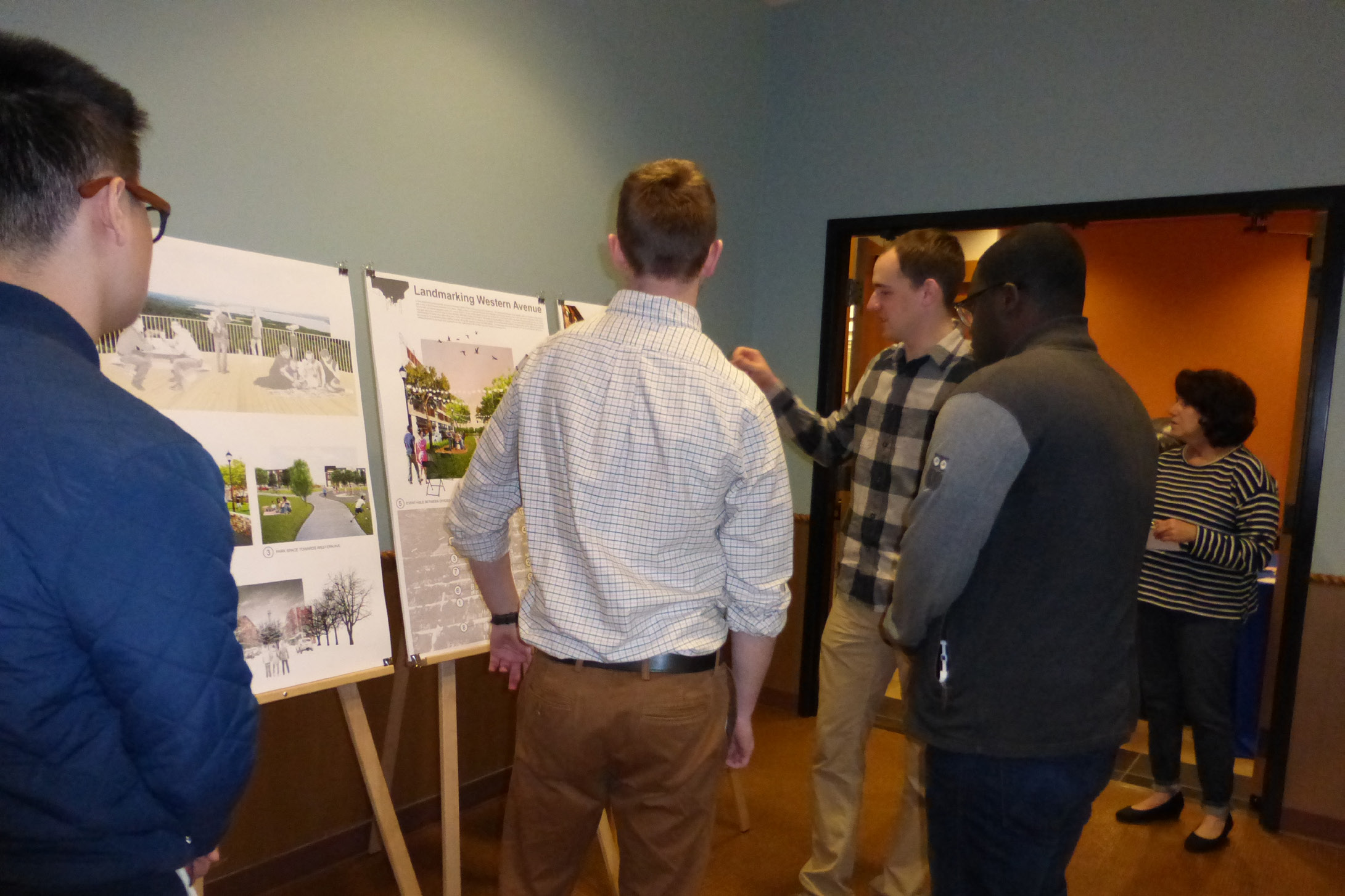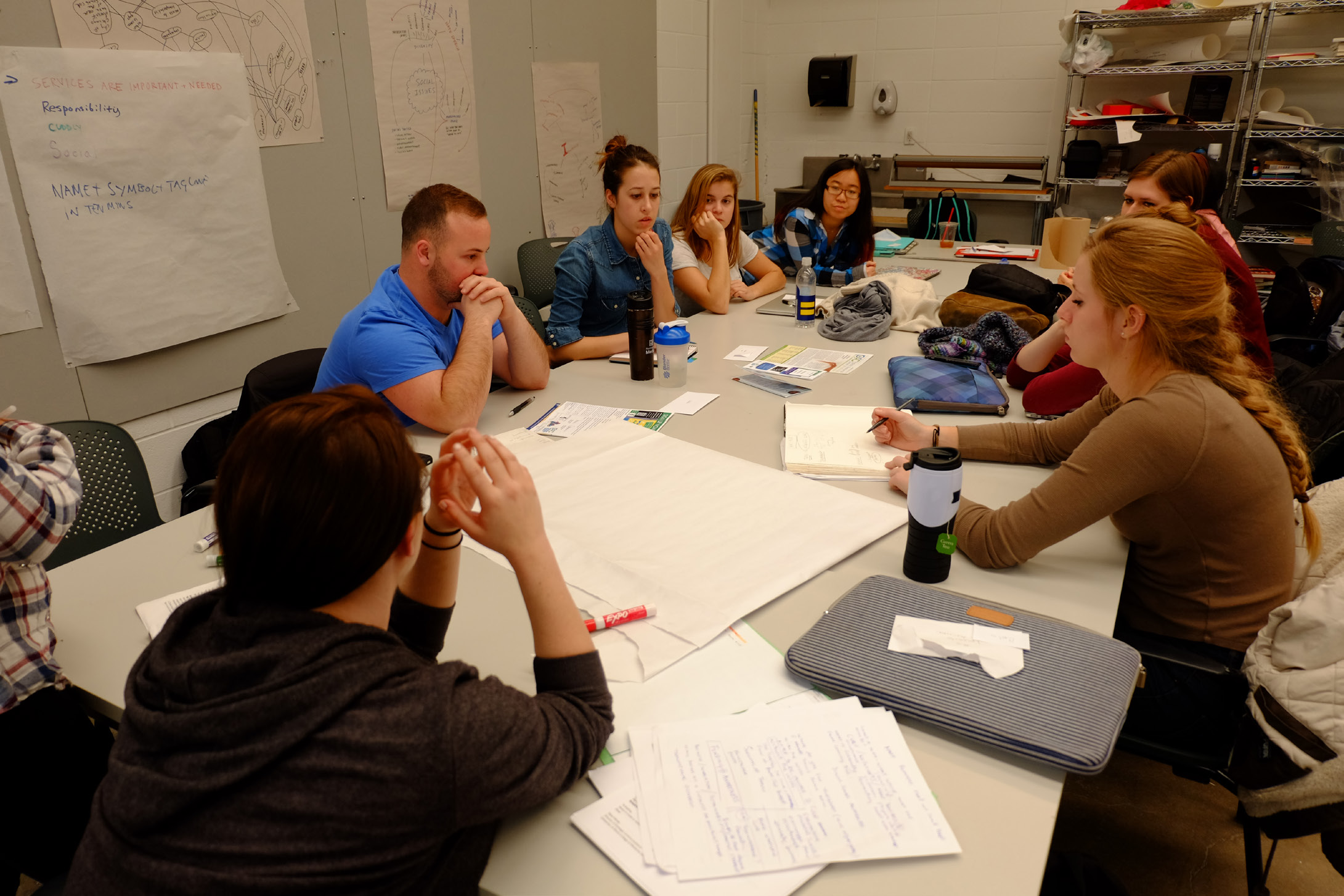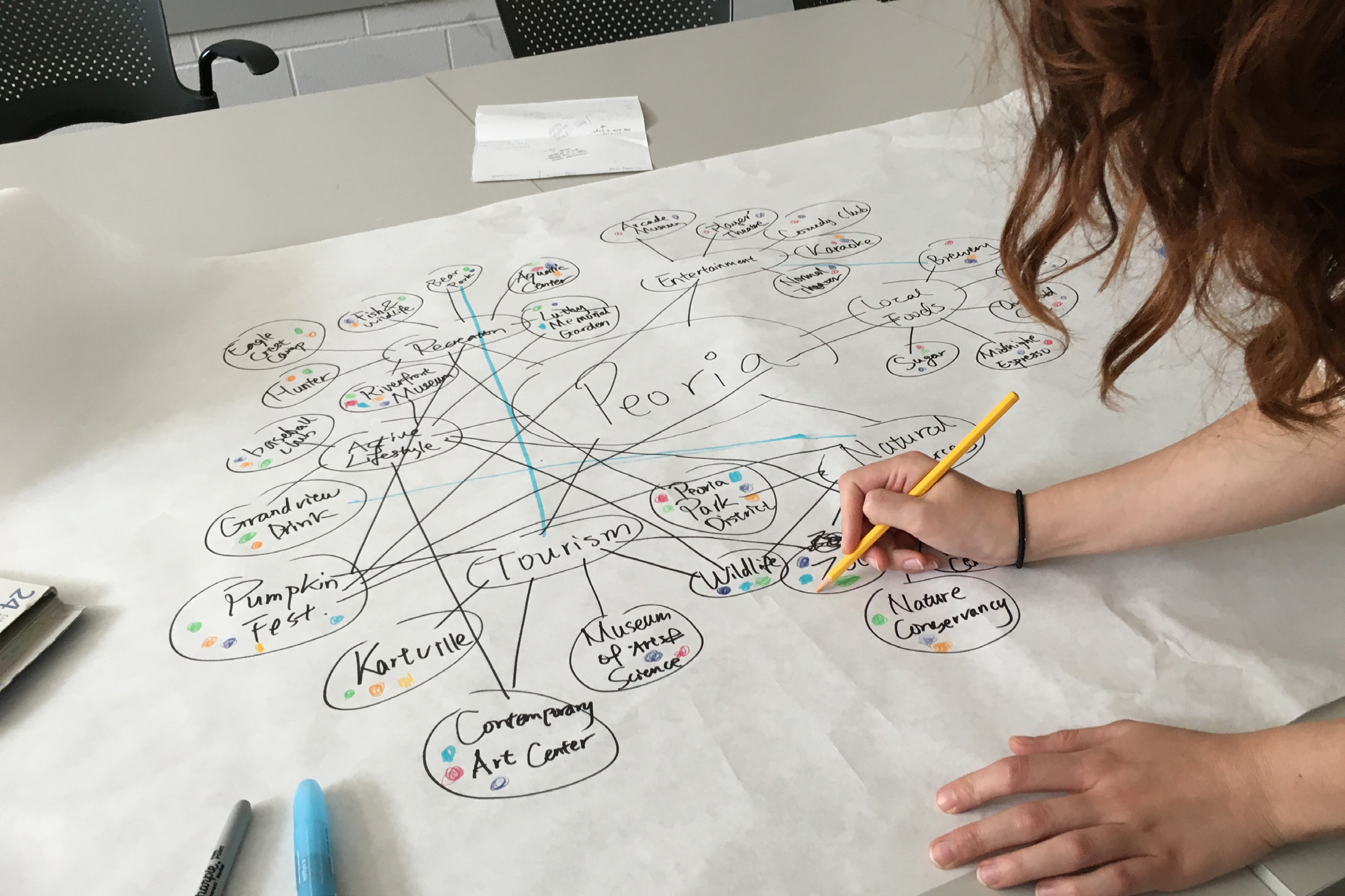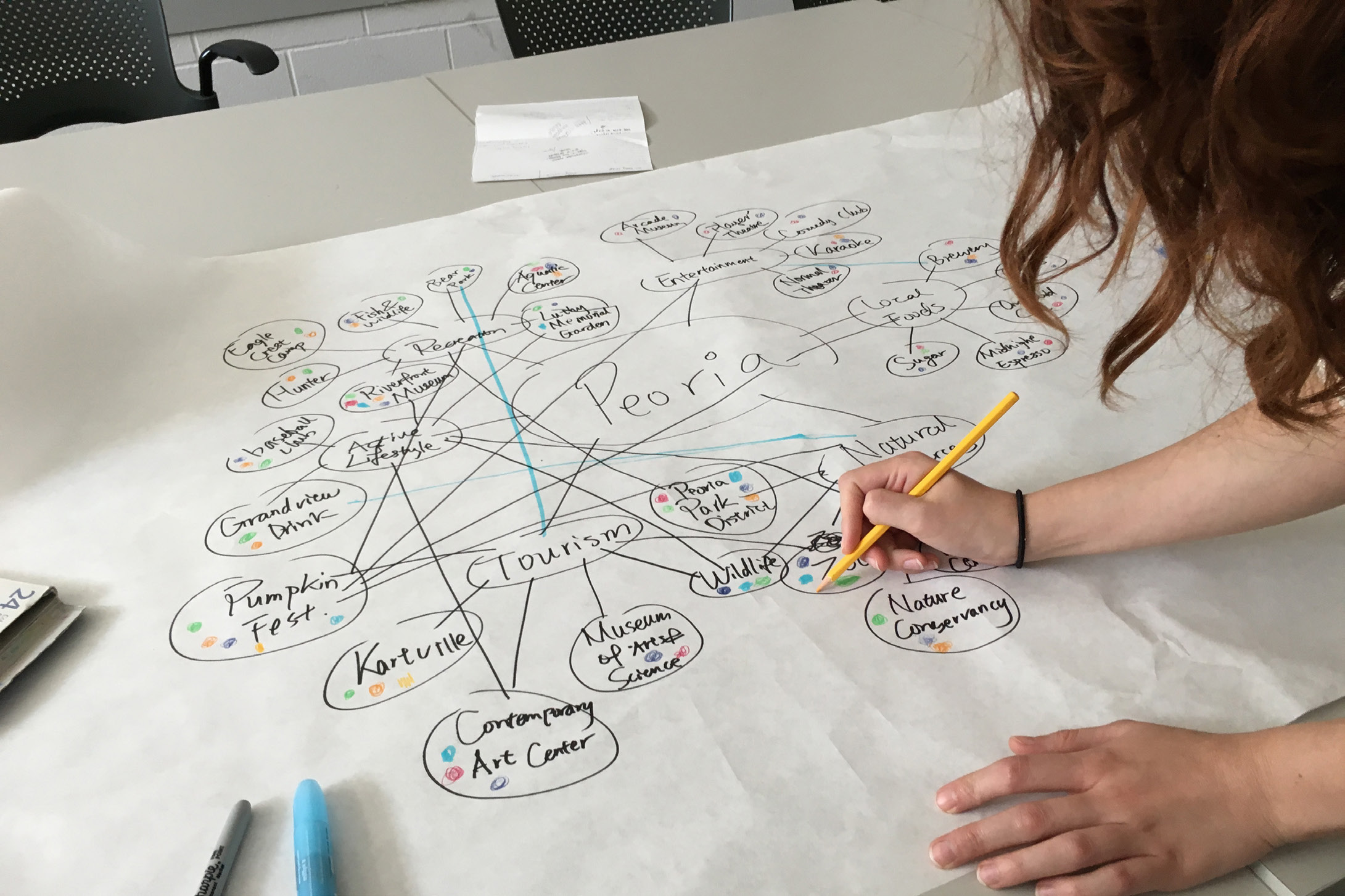This project brought together citizens and organizations in Peoria, Illinois with researchers and students in design and planning from the University of Illinois at Urbana-Champaign. Together, we taught each other about the conditions and opportunities that exist in Peoria that might be leveraged to promote the health and wellbeing of people in the region. Then, over the course of two years, students from five courses and varying groups of researchers worked with community partners in Peoria to generate concrete and specific plans for creating healthier individuals, families, and communities.
Key Outcomes
Working together as designers, planners, architects and researchers, we:
- Raised awareness about the capacity of urban design and urban planning to impact the health and wellbeing of the citizens of Peoria.
- Generated concrete examples of how the city might be re-designed to create healthier neighborhoods.
- Identified citizen priorities regarding the possible uses of vacant housing parcels and provided the city with viable usage options for those parcels, including to reduce flooding and increase economic development.
- Developed the Safe Routes to School (SRTS) Plan, meeting all the necessary requirements for the plan to be used to apply for federal funding through the SRTS federal program.
- Supported the development of grant proposals to continue this work. One proposal, written to the Robert Woods Johnson Foundation and submitted by the City of Peoria, was successful. Another proposal, submitted by a community group, was short-listed for funding by The Play Everywhere Challenge.
In order to achieve these outcomes, we brought together experts and students from four distinct areas of expertise: Urban Planning, Architecture, Landscape Architecture, and Graphic Design.
Specifically, the UIUC team implemented:
- Department of Urban Planning – Two student capstone projects and Spring Workshop
- School of Architecture – Spring Design Studio
- Department of Landscape Architecture – Fall Design Studio
- Department of Graphic Design – Fall Vertical Studio and Spring Studio
Below, we provide an overview of the courses and design studios that worked in collaboration with the citizens, organizations, and institutions of Peoria on this project.
Health and Place: A Planning Workshop
This workshop (UP 494 ME) focused on the East Bluff Neighborhood in Peoria. The outcome of this course includes a Neighborhood Health Profile, along with a Neighborhood Wellness Action plan. The goal of the neighborhood plan is to develop recommendations and strategies to make it easier to live a healthy lifestyle in the East Bluff Neighborhood and to counteract any major health concerns, especially as they relate to physical inactivity, access to healthy food, access to green space and health facilities, social interaction and issues surrounding crime and safety.
A graduate architectural design studio (ARCH 572) focused on the South Western Avenue urban corridor, specifically the Lincoln Avenue & Western Avenue neighborhood center in the South Side neighborhood of Peoria. The studio outcomes include proposals for a walkable, mixed-use urban district with a neighborhood fabric offering a fine-grained mix of many environment use types that may include residential, office, retail, employment, education, commerce, public and community gathering, government and religious institutions. When woven together into an aesthetically inspiring ensemble, these should ultimately support the everyday needs of residents and visitors and provide a pleasant and stimulating sensory context. Final proposals help the city to attract businesses, investment, and residents to the South Village District.
Addressing the Devastation of Combined Storm & Sanitary Sewer Overflows
The Landscape Architecture studio (LA 335) focused on a specific and significant problem in Peoria—the problem of combined-storm-sanitary-sewer overflow (CSO). Peoria experiences between 20 and 30 CSO events per year, resulting in the city discharging untreated overflows into the Illinois River. Each event not only contributes to severe erosion, flooding, and contamination of clean water in the region, but also increases the rate at which existing storm water infrastructure ages. The studio explored the potential for broader, longer term, and more comprehensive approaches to neighborhood development and re-design in Peoria. Students worked in teams to develop six design strategies that envision the future of water systems in relation to current urbanization and regional demands.
Graphic Design to Enhance Understanding about Health
During the 2015-2016 academic year, two groups of Graphic Design students investigated ways to improve the health of the Greater Peoria Region through more effective engagement and communication. In this context, the term “health” extends beyond a purely medical denotation and refers to a broader sense of wellbeing and vibrancy within the community. Over the course of two semesters, the students created solutions to regional issues around health and explored graphic design roles in society outside of those that are historically commercial and instead have positive social impacts on people and the planet.
Urban Planning Masters students Emily Weimer and Rachael Wilson went beyond the classroom, choosing to focus their final projects, known as Capstones, on specific health challenges in two Peoria neighborhoods. The hope is that if the neighborhoods successfully adopt the recommended practices, they will eventually be adopted all over the city.
East Bluff Safe Routes to Work & Play
Weimer’s project examines the Peoria neighborhood of Glen Oak and its school of the same name. One easy way to build stronger community connections and encourage healthier habits like walking and biking is by having students and their parents walk to school. Cracked sidewalks, unsafe intersections and a lack of crossing guards has made this difficult, prompting residents to identify these issues as their main concerns. The report describes the impact of these challenges before offering ideas on how to fix them and create a safer neighborhood.
Healthy Neighborhood Revitalization in Peoria, Illinois
This project by Wilson takes a holistic approach to health in Peoria, using the book Making Healthy Places: Designing and Building for Health, Well-Being, and Sustainability by Andrew L. Dannenberg, et al., as a guide to pinpoint the specific needs in the examined census tract. Using U.S. Census data and interviews with local residents and business owners, Wilson identifies the health priorities in the neighborhood, including crime and access to economic opportunities, and offers suggestions for how community leaders can proceed to improve health outcomes in the area.
Summary Evaluation
During August 2016, some of the project leaders met with a variety of the participants in this project. We discussed the value of participating, the significant outcomes, and the changes to the process that might make future engagements easier and more impactful.
Community Participants. From the perspective of our community participants, this project was tremendously worthwhile. Participants were delighted with the creativity and energy that the students brought to the problems at hand. By engaging with city officials, non-profits, and local citizens, we raised awareness about the capacity of design and planning to impact the health and wellbeing of the citizens of Peoria and provided concrete examples of how the city might be redesigned to create a healthier built environment.
We identified citizen priorities regarding the possible uses of vacant housing parcels and provided the city with viable options for how to use those parcels to reduce flooding and increase economic development.
We developed a Safe Routes to School (SRTS) Plan that met all the necessary requirements for an application for federal funding through the SRTS federal program.
Two grant proposals were written as an outgrowth of this process. The Invest Health proposal, written by City staff and submitted to the Robert Wood Johnson Foundation, was successful. The Play Everywhere Challenge 200 proposal was submitted by a members of the South Side Neighborhood. It made the final stage of evaluation but was not funded in this round. There are plans to re-submit this proposal.
University of Illinois Participants. This project was a significant benefit to the students and faculty members who participated. The project gave students multiple opportunities to apply theory and methods to real communities facing a variety of challenges that will become common place in the 21st Century. The public nature of their participation also created a profound motivation in the students to develop creative, functional solutions to the challenges that the citizens and institutions of Peoria face.
Engaging with the community helped to enhance students’ interpersonal skills, including facilitation and presentation skills. Students also gained a better understanding of the application of health-based environmental research in the design process.
Finally, by engaging with city officials, non-profits, and local citizens, the University of Illinois team raised awareness about the capacity of urban planning, architecture, landscape architecture, and graphic design to impact the health and wellbeing of the citizens of Peoria and provided concrete examples of how the city might be re-designed to create a healthier built environment.
Acknowledgments
We wish to thank many people whose thoughtful insights, candid input, and generous support helped make this project a success. In Peoria: The Peoria Innovation Team, local government staff and officials, non-profit agencies, and residents of the South Side and East Bluff Neighborhoods freely gave their time, ideas, resources, and energies in support of this effort. At the University of Illinois: University of Illinois Extension, University of Illinois Office of the Provost, and the College of Fine and Applied Arts provided timely and much needed financial and logistical support for this project. We especially wish to thank Kathie Brown, an Illinois Extension Community & Economic Development Educator, who provided extraordinary assistance in facilitating collaborations among all the various entities involved in this project. This broad network of partners and collaborators made this project possible.

